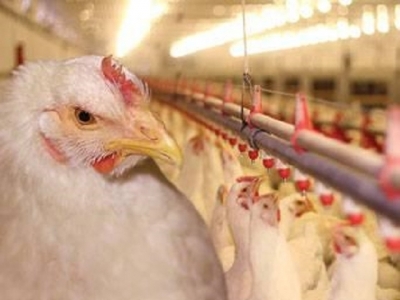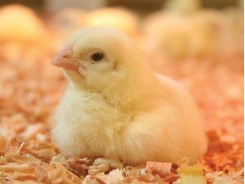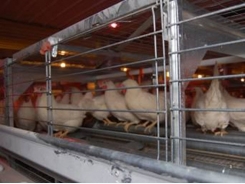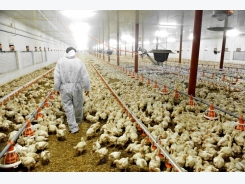10 tips for feeding poultry raised without antibiotics

Common approaches encountered in successful antibiotic-free feeding programs
Branex | Dreamstime.com | Only through the synergy of several applications and practices it is possible to effectively replace antibiotics in poultry diets.
No single technology, feed additive or management practice can support productivity in poultry as cost-effectively as antimicrobial agents. Yet, it is high time, especially in the U.S., we discuss how we can do just that: feed poultry with diets devoid of antibiotics.
Based on the available research information, and my personal experiences as a consulting nutritionist, I strongly believe that only through the synergy of several applications and practices it is possible to effectively replace antibiotics. Nevertheless, feed cost will never be as "cheap" as with antibiotics, because all new technologies come at a much sharper cost. A list of common approaches encountered in successful antibiotic-free feeding programs follows:
1. Health status. Antimicrobial agents are most effective in low-health flocks. For example, bacteria thrive and multiply in facilities that lack proper cleaning protocols. Improving health by tightening biosecurity, adopting all-in, all-out procedures, enhancing cleaning/disinfecting procedures and stabilizing flock health usually reduces the need for antimicrobial agents. No matter how many in-feed additives are used, poultry cannot thrive in substandard facilities.
2. Nutrient digestibility. Nutrients that remain unabsorbed at the terminal ileum become substrate for bacterial proliferation in the large intestine. A large microbial load not only drains nutrients from the animal but it also harbors potential pathogenic bacteria such as colibacillus, Salmonella and clostridium. Unabsorbed nutrients also contribute to environmental burden as they end up eventually in manure.
3. Feed intake post-hatch. Early feed intake post-hatch plays a critical role in gut health by promoting the establishment of a healthy microflora, assuming the feed ingested is designed appropriately for this goal. Even after a short period of feed deprivation, gut epithelium becomes more permeable to antigenic proteins (such as those in soybean meal), toxins produced by pathogens and, in general, more susceptible to bacterial attachment.
4. Dietary protein. Bacteria require protein to grow and multiply. By reducing dietary protein and increasing its digestibility, bacterial proliferation is markedly impaired. At the same time, it is important to offer a well-balanced amino acid profile to the animal (based on feed-grade amino acids) to ensure maximal productivity.
5. Organic acids. Most pathogenic bacteria are acid-intolerant, which means that gastrointestinal acidification by using dietary organic acids may actually halt or even reverse microbial growth. Research and experience dictate that blends of organic acids are more effective compared to single acids.
6. Botanicals. Certain phytogenic compounds have interesting antimicrobial and antiviral properties. Cinnamon, oregano and clove are among the most commonly used botanicals in commercial products. Perhaps the most significant contribution of botanicals is their synergy with organic acids, as they tend to work best when combined together.
7. Enzymes. Certain enzymes that degrade anti-nutritional factors, such as non-starch polysaccharides in cereals, may be beneficial in antibiotic-free programs. Their mode of action is indirect in that they reduce the availability of substrate (undigested feed) to microbes. Enzymes are more beneficial, therefore, in diets composed of wheat, barley and rye, rather than corn. Proteases might also have a role in such feeding programs.
8. Direct-fed microbials (probiotics). Providing beneficial live bacteria via feed is also an alternative strategy in antibiotic-free programs. Most commercial preparations include one or multiple species, usually of foreign origin. Pelleting can reduce the effectiveness of these products and thus heat-tolerant preparations are preferred. In addition, selected strains must be acid-resistant so that they can be combined with dietary acidification regimens. Probiotics appear to be working best with layers than with broilers, perhaps because of the longer life span of layers.
9. Functional fibers. These are non-digestible, yet fermentable compounds that promote proliferation of indigenous beneficial bacterial populations, such as lactobacillus. Product quality is of paramount importance in selecting functional fibers as research results have been variable. Recent research indicated that some products may actually increase digesta viscosity, which promotes proliferation of pathogenic Escherichia coli.
10. Minerals. There is considerable work being done in evaluating the use of zinc and copper compounds in poultry as antibiotic replacements. This is a well-established practice in pigs, and it appears to be promising in broiler feeding.
Related news
Tools

Phối trộn thức ăn chăn nuôi

Pha dung dịch thủy canh

Định mức cho tôm ăn

Phối trộn phân bón NPK

Xác định tỷ lệ tôm sống

Chuyển đổi đơn vị phân bón

Xác định công suất sục khí

Chuyển đổi đơn vị tôm

Tính diện tích nhà kính

Tính thể tích ao




 7 keys to antibiotic-free poultry production
7 keys to antibiotic-free poultry production  How can feed influence gut performance in birds?
How can feed influence gut performance in birds?